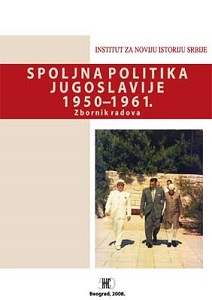Finnish-Yugoslav relations 1948–1961
Finnish-Yugoslav relations 1948–1961
Finland, Yugoslavia and the Soviet Border in Europe
Author(s): Rinna Elina Kullaa
Subject(s): Diplomatic history, Political history, Post-War period (1950 - 1989), History of Communism, Cold-War History
Published by: Institut za noviju istoriju Srbije
Keywords: Finland; Yugoslavia; Soviet Border; Tito-Stalin split; Nordic Union; Balkan Pact
Summary/Abstract: This paper examines the content of the Finnish-Yugoslav ties formed in the 1950s. These two states were signifi cantly affected by the extension of the Soviet border into Europe after the Second World War. I argue that Soviet influence over the states of the Warsaw Pact represents a de facto extension of the Soviet border into Eastern Europe after WWII. Recent Russian historiography posits a turn toward geo-political pragmatism and away from ideological primacy during the war; some describe Stalin as adhering to Tsarist foreign policy priorities over considerations of world Communism. An examination of Finnish-Yugoslav relations reveals that a similar focus on pragmatism and border security was continued by Stalin in the post-WWII period. I argue that Finnish-Yugoslav ties in the 1950s serve as evidence of the regional nature of the Soviet foreign policy focused on the Soviet-European border. This extension triggered, in part, the drafting of separate but similar neutralism policies in Yugoslavia and in Finland in the 1950s. The paper seeks to define interactions between the Soviet, Finnish and Yugoslav leaderships with regard to neutrality and security along the Eastern European border. The paper investigates the Yugoslav and Finnish leaderships’ judgments of each other in the aftermath of 1948 and follows the comparative analysis of corresponding reactions to the death of Stalin in Helsinki and in Belgrade in 1953. The Nordic Union and the Balkan Pact re-signed in 1952 are discussed as regional responses to the extension of the Soviet border. The study compares the differences in policy reactions in Finland and in Belgrade to the political pressure exerted by Moscow in the aftermath of the Hungarian revolution and seeks to explain why at the conclusion of the 1950s – decade contemplative of common roads to neutralism – the Finnish membership in European Free Trade Association (EFTA) and Yugoslav Non-Alignment Movement produced separate foreign policy futures.
Book: Spoljna politika Jugoslavije 1950-1961.
- Page Range: 381-396
- Page Count: 16
- Publication Year: 2008
- Language: English
- Content File-PDF

